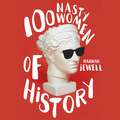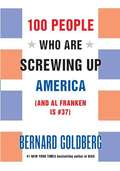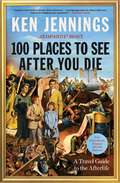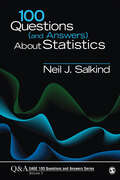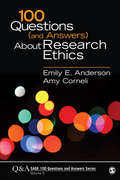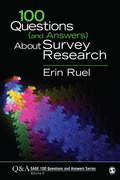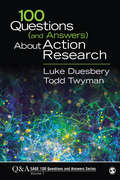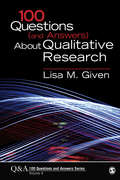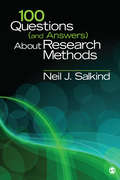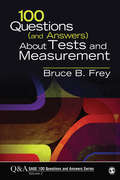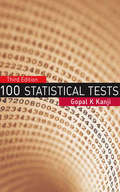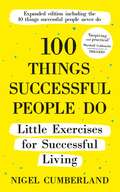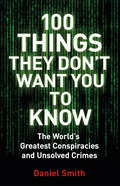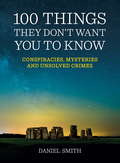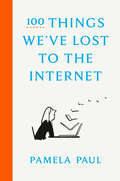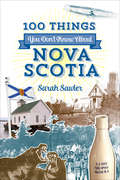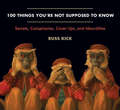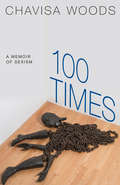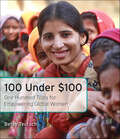- Table View
- List View
100 Nasty Women of History: Brilliant, badass and completely fearless women everyone should know
by Hannah Jewell100 fascinating and brilliantly written stories about history's bravest, baddest but little known 'nasty' women from across the world.In the final debate of the 2016 US presidential election, Donald Trump leaned into the microphone as Hillary Clinton spoke about social security and called his opponent 'such a nasty woman'. The phrase has stuck around and has since become something of a badge of honour for women around the world. What better time than now, then, for us to look back and learn a thing or two from the 'nasty' women of the past? Compiled and written by BuzzFeed writer Hannah Jewell, 100 Nasty Women of History contains profiles of women from across every century, race and continent, united in the fact that they were all a bit 'nasty'. From 3rd-century Japanese Empress Jingu to 20th-century British social reformer Octavia Hill, these are the women who were bold and powerful, but maybe put people (men's) backs up by being so. 100 Nasty Women of History is an accessible, intelligent, hilarious (and sometimes sweary) guide to the history-making women whom you probably don't know - but definitely should.(P)2017 Hodder & Stoughton Limited
100 People Who Are Screwing Up America
by Bernard GoldbergThe number one New York Times bestselling author of Bias delivers another bombshell-this time aimed at . . . 100 People Who Are Screwing Up America No preaching. No pontificating. Just some uncommon sense about the things that have made this country great-and the culprits who are screwing it up. Bernard Goldberg takes dead aim at the America Bashers (the cultural elites who look down their snobby noses at "ordinary" Americans) . . . the Hollywood Blowhards (incredibly ditzy celebrities who think they're smart just because they're famous) . . . the TV Schlockmeisters (including the one whose show has been compared to a churning mass of maggots devouring rotten meat) . . . the Intellectual Thugs (bigwigs at some of our best colleges, whose views run the gamut from left wing to far left wing) . . . and many more. Goldberg names names, counting down the villains in his rogues' gallery from 100 all the way to 1-and, yes, you-know-who is number 37. Some supposedly "serious" journalists also made the list, including the journalist-diva who sold out her integrity and hosted one of the dumbest hours in the history of network television news. And there are those famous miscreants who have made America a nastier place than it ought to be-a far more selfish, vulgar, and cynical place. But Goldberg doesn't just round up the usual suspects we have come to know and detest. He also exposes some of the people who operate away from the limelight but still manage to pull a lot of strings and do all sorts of harm to our culture. Most of all, 100 People Who Are Screwing Up America is about a country where as long as anything goes, as one of the good guys in the book puts it, sooner or later everything will go. This is serious stuff for sure. But Goldberg will also make you laugh as he harpoons scoundrels like the congresswoman who thinks there aren't enough hurricanes named after black people, and the environmentalist to the stars who yells at total strangers driving SUVs-even though she tools around the country in a gas-guzzling private jet. With Bias, Bernard Goldberg took us behind the scenes and exposed the way Big Journalism distorts the news. Now he has written a book that goes even further. This time he casts his eye on American culture at large-and the result is a book that is sure to become the voice of all those Americans who feel that no one is speaking for them on perhaps the most vital issue of all: the kind of country in which we want to live.
100 Places to See After You Die: A Travel Guide to the Afterlife
by Ken JenningsFrom New York Times bestselling author and legendary Jeopardy! host and champion Ken Jennings comes a hilarious travel guide to the afterlife, exploring to die for destinations from literature, mythology, and pop culture.Ever wonder which circles of Dante&’s Inferno have the nicest accommodations? Where&’s the best place to grab a bite to eat in the ancient Egyptian underworld? How does one dress like a local in the heavenly palace of Hinduism&’s Lord Vishnu, or avoid the flesh-eating river serpents in the Klingon afterlife? What hidden treasures can be found off the beaten path in Hades, Valhalla, or TV&’s The Good Place? Find answers to all those questions and more about the world(s) to come in this eternally entertaining book from Ken Jennings. Written in the style of iconic bestselling travel guides, Jennings wryly outlines journeys through the afterlife, as dreamed up over 5,000 years of human history by our greatest prophets, poets, mystics, artists, and TV showrunners. This comprehensive index of 100 different afterlife destinations was meticulously researched from sources ranging from the Epic of Gilgamesh to modern-day pop songs, video games, and Simpsons episodes. Get ready for whatever post-mortal destiny awaits you, whether it&’s an astral plane, a Hieronymus Bosch hellscape, or the baseball diamond from Field of Dreams. Fascinating, funny, and irreverent, this &“gung-ho travel guide to Heaven, Hell, and beyond&” (The New Yorker) will help you create your very own bucket list—for after you&’ve kicked the bucket.
100 Questions (SAGE 100 Questions and Answers #3)
by Dr Neil J. SalkindIn an increasingly data-driven world, it is more important than ever for students as well as professionals to better understand basic statistical concepts. 100 Questions (and Answers) About Statistics addresses the essential questions that students ask about statistics in a concise and accessible way. It is perfect for instructors, students, and practitioners as a supplement to more comprehensive materials, or as a desk reference with quick answers to the most frequently asked questions. “The key strength of this book is the straightforward approach. I love the to-the-point question-and-answer format. . . . This book would be useful in both statistics and research methods courses . . . [and] in math tutoring labs. I love the tone the author uses, as it is not condescending. Students will be encouraged.” —Jamie Brown, Mercer University “The sequencing of the questions works very well—from the most basic to the more intimidating questions often asked by students in an intro class. . . . If Dr. Salkind is the author, I know it will be well-written, and both entertaining and easy to understand.” —Linda Martinez, California State University, Long Beach “Practical examples from all types of work: showing the steps to do each analysis and then the ways to use the results responsibly.” —Jennifer R. Salmon, Eckerd College
100 Questions (SAGE 100 Questions and Answers #3)
by Dr Neil J. SalkindIn an increasingly data-driven world, it is more important than ever for students as well as professionals to better understand basic statistical concepts. 100 Questions (and Answers) About Statistics addresses the essential questions that students ask about statistics in a concise and accessible way. It is perfect for instructors, students, and practitioners as a supplement to more comprehensive materials, or as a desk reference with quick answers to the most frequently asked questions. “The key strength of this book is the straightforward approach. I love the to-the-point question-and-answer format. . . . This book would be useful in both statistics and research methods courses . . . [and] in math tutoring labs. I love the tone the author uses, as it is not condescending. Students will be encouraged.” —Jamie Brown, Mercer University “The sequencing of the questions works very well—from the most basic to the more intimidating questions often asked by students in an intro class. . . . If Dr. Salkind is the author, I know it will be well-written, and both entertaining and easy to understand.” —Linda Martinez, California State University, Long Beach “Practical examples from all types of work: showing the steps to do each analysis and then the ways to use the results responsibly.” —Jennifer R. Salmon, Eckerd College
100 Questions (SAGE 100 Questions and Answers #5)
by Emily E. Anderson Amy L. Corneli100 Questions (and Answers) About Research Ethics is an essential guide for graduate students and researchers in the social and behavioral sciences. It identifies ethical issues that individuals must consider when planning research studies as well as provides guidance on how to address ethical issues that might arise during research implementation. Questions such as assessing risks, to protecting privacy and vulnerable populations, obtaining informed consent, using technology including social media, negotiating the IRB process, and handling data ethically are covered. Acting as a resource for students developing their thesis and dissertation proposals and for junior faculty designing research, this book reflects the latest U.S. federal research regulations to take effect mostly in January 2018.
100 Questions (SAGE 100 Questions and Answers #5)
by Emily E. Anderson Amy L. Corneli100 Questions (and Answers) About Research Ethics is an essential guide for graduate students and researchers in the social and behavioral sciences. It identifies ethical issues that individuals must consider when planning research studies as well as provides guidance on how to address ethical issues that might arise during research implementation. Questions such as assessing risks, to protecting privacy and vulnerable populations, obtaining informed consent, using technology including social media, negotiating the IRB process, and handling data ethically are covered. Acting as a resource for students developing their thesis and dissertation proposals and for junior faculty designing research, this book reflects the latest U.S. federal research regulations to take effect mostly in January 2018.
100 Questions (SAGE 100 Questions and Answers #6)
by Erin RuelErin Ruel′s 100 Questions (and Answers) About Survey Research covers the entire survey research process, starting with developing research questions and ending with the analysis and write-up. It includes the traditional survey topics of design, sampling, question writing, and validity; includes a chapter on research ethics; covers the important topics of preparing, cleaning, and analyzing data; and ends with a section on how to write up survey results for a variety of purposes. Useful as a supplementary text in the classroom or as a reference guide for anyone starting a new survey project, the guidance is presented in a FAQ style to allow readers to jump around the book, so as to accommodate the nonlinear and iterative nature of research.
100 Questions (SAGE 100 Questions and Answers #6)
by Erin RuelErin Ruel′s 100 Questions (and Answers) About Survey Research covers the entire survey research process, starting with developing research questions and ending with the analysis and write-up. It includes the traditional survey topics of design, sampling, question writing, and validity; includes a chapter on research ethics; covers the important topics of preparing, cleaning, and analyzing data; and ends with a section on how to write up survey results for a variety of purposes. Useful as a supplementary text in the classroom or as a reference guide for anyone starting a new survey project, the guidance is presented in a FAQ style to allow readers to jump around the book, so as to accommodate the nonlinear and iterative nature of research.
100 Questions (SAGE 100 Questions and Answers #7)
by Luke S. Duesbery Todd M. Twyman100 Questions (and Answers) About Action Research identifies and answers the essential questions on the process of systematically approaching your practice from an inquiry-oriented perspective, with a focus on improving that practice. This unique text offers progressive instructors an alternative to the research status quo and serves as a reference for readers to improve their practice as advocates for those they serve. The Question and Answer format makes this an ideal supplementary text for traditional research methods courses, and also a helpful guide for practitioners in education, social work, criminal justice, health, business, and other applied disciplines.
100 Questions (SAGE 100 Questions and Answers #7)
by Luke S. Duesbery Todd M. Twyman100 Questions (and Answers) About Action Research identifies and answers the essential questions on the process of systematically approaching your practice from an inquiry-oriented perspective, with a focus on improving that practice. This unique text offers progressive instructors an alternative to the research status quo and serves as a reference for readers to improve their practice as advocates for those they serve. The Question and Answer format makes this an ideal supplementary text for traditional research methods courses, and also a helpful guide for practitioners in education, social work, criminal justice, health, business, and other applied disciplines.
100 Questions (SAGE 100 Questions and Answers)
by Lisa M. GivenExploring 100 key questions (and answers) on the nature and practice of qualitative inquiry, this unique book addresses the practical decisions that researchers must make in their work, from the design of the study, through ethics approval, implementation, and writing. The book’s quick-scan, question-and-answer format make it ideal as a supplementary text or as a ready reference for graduate students preparing for comprehensive exams and writing research proposals, undergraduates in affiliated programs who will not be taking a primary course in qualitative research methods, and researchers working across disciplines in academic or practice environments.
100 Questions (SAGE 100 Questions and Answers)
by Lisa M. GivenExploring 100 key questions (and answers) on the nature and practice of qualitative inquiry, this unique book addresses the practical decisions that researchers must make in their work, from the design of the study, through ethics approval, implementation, and writing. The book’s quick-scan, question-and-answer format make it ideal as a supplementary text or as a ready reference for graduate students preparing for comprehensive exams and writing research proposals, undergraduates in affiliated programs who will not be taking a primary course in qualitative research methods, and researchers working across disciplines in academic or practice environments.
100 Questions (SAGE 100 Questions and Answers)
by Neil J. Salkind"How do I create a good research hypothesis?""How do I know when my literature review is finished?""What is the difference between a sample and a population?""What is power and why is it important?"In an increasingly data-driven world, it is more important than ever for students as well as professionals to better understand the process of research. This invaluable guide answers the essential questions that students ask about research methods in a concise and accessible way.
100 Questions (and Answers) About Tests and Measurement
by Bruce B. Frey100 Questions (and Answers) About Tests and Measurement asks (and answers) important questions about the world of social science measurement. It is ideal as an introduction to students new to the concepts, to advanced students and professionals looking to review ideas and procedures, as well as to those interested in knowing more about a test they have to take or how to interpret the score they receive.
100 Statistical Tests
by Gopal K Kanji'This is a very valuable book for statisticians and users of statistics. It contains a remarkable number of statistical tests which are currently available and useful for practical purposes' - Statistical Papers This expanded and updated Third Edition of Gopal Kanji's best-selling resource on statistical tests covers all the most commonly used tests with information on how to calculate and interpret results with simple datasets. Each entry begins with a short summary statement about the test's purpose, and contains details of the test objective, the limitations (or assumptions) involved, a brief outline of the method, a worked example and the numerical calculation. This new edition also includes: " A brand new introduction to statistical testing with information to guide the reader through the book so that even non-statistics students can find information quickly and easily " Real-world explanations of how and when to use each test with examples drawn from wide range of disciplines. " A useful Classification of Tests table " All the relevant statistical tables for checking critical values 100 Statistical Tests: Third Edition is the one indispensable guide for users of statistical materials and consumers of statistical information at all levels and across all disciplines.
100 Things Successful People Do: Expanded Edition
by Nigel CumberlandEXPANDED EDITION FEATURING 10 BRAND NEW CHAPTERS: THE 10 THINGS SUCCESSFUL PEOPLE NEVER DO** 100 THINGS SUCCESSFUL PEOPLE DO: NOW AN INTERNATIONAL BESTSELLER!** TRANSLATED IN 20 LANGUAGES WORLDWIDE'Inspiring and practical' MARSHALL GOLDSMITH, bestselling author of TRIGGERSYOUR GUIDE TO CREATING A SUCCESSFUL LIFE100 Things Successful People Do is your guide to successful living. Mixing simple instructions with activities to get you started, whether you are looking to succeed in your family life, at work, in sports, at school or in retirement, you will find mindsets, habits, and techniques here that will help you get the results you want.100 Things Successful People Do is packed with great ideas for working smart and living well, all carefully chosen to help you achieve any kind of success you can imagine. You will discover the habits that are common to successful people and find out how to use them in your own life.Every chapter features a new idea that will help you get closer to your goals. Mixing simple descriptions with activities and exercises, you will learn the optimal mindset and habits you need to succeed in work and life.And this expanded edition now features a brand new section revealing the 10 things that successful people never do.
100 Things They Don't Want You To Know: Conspiracies, mysteries and unsolved crimes
by Daniel SmithTHE TRUTH IS OUT THERE . . .Who was Jack the Ripper? Where did the Nazis stash their gold? Who are the real Men in Black? Did aliens send the 'WOW' signal? And how will the world end? 100 Things They Don't Want You to Know sets out to uncover the truth behind the world's most mysterious cover-ups and unexplained events that have been shrouded in secrecy for generations. From suspicious deaths and disappearances to enigmatic identities, from Cold War cover-ups to puzzling paranormal phenomena and from ancient artefacts to coded documents, 100 Things They Don't Want You to Know takes you on a quest to solve the greatest mysteries, strange disappearances, suspicious cover-ups and conspiracy theories.Including: Black Dahlia, the Marfa Lights, the Turin Shroud, Spontaneous Combustion, Lost Literature of the Mayan Civilisation, Disappearance of Jean Spangler, Shakespeare's True Identity, the Turin Shroud, the Easter Island Glyphs, the Death of Lee Harvey Oswald, the Mothman, The Flying Dutchman, the Secret Mission of Ruldolph Hess, the 'WOW" signal, Lewis Carroll's Lost Diaries, the Man in the Iron Mask and the Beast of Bodmin Moor.
100 Things They Don't Want You To Know: Conspiracies, mysteries and unsolved crimes (100 Things)
by Daniel SmithWho was the Mothman? What caused the death of the Bordens? Did Lee Harvey Oswald assassinate JFK? And what was the true meaning of the 'WOW' signal? Daniel Smith, author of 100 Places You Will Never Visit, sets out to uncover the truth behind 100 unexplained events that have been shrouded in secrecy for generations. Under his investigative searchlight are mysterious landmarks, disappearances at sea, legendary myths, astonishing coincidences, UFOs, missing people and bizarre natural phenomena. Ranging from suspicious deaths (The Black Dahlia) to notorious murderers (Jack the Ripper) and from ancient artefacts (Tarim Mummies) to Cold War cover-ups (Lost Cosmonauts), via documents that remain untranslatable (Voynich Manuscript), debated icons of religion (Shroud of Turin) and puzzling paranormal appearances (Marfa Lights), Daniel Smith leaves no stone unturned in his quest to expose the bare facts and unravel the tales that have gripped curious minds for years. Also includes: Spontaneous Combustion, Whereabouts of Nazi Gold, Red Rain, Lost Literature of the Mayan Civilisation, Disappearance of Jean Spangler, Severed Feet of British Columbia, Shakespeare's Dark Lady, The Shugborough Inscription, Stonehenge, The Flying Dutchman, Lewis Carroll's Lost Diaries and the Beast of Bodmin Moor.
100 Things They Don't Want You To Know: Conspiracies, mysteries and unsolved crimes (100 Things)
by Daniel SmithTHE TRUTH IS OUT THERE . . . Who was Jack the Ripper? Where did the Nazis stash their gold? Who are the real Men in Black? Did aliens send the 'WOW' signal? And how will the world end? 100 Things They Don't Want You to Know sets out to uncover the truth behind the world's most mysterious cover-ups and unexplained events that have been shrouded in secrecy for generations. From suspicious deaths and disappearances to enigmatic identities, from Cold War cover-ups to puzzling paranormal phenomena and from ancient artefacts to coded documents, 100 Things They Don't Want You to Know takes you on a quest to solve the greatest mysteries, strange disappearances, suspicious cover-ups and conspiracy theories.Including: Black Dahlia, the Marfa Lights, the Turin Shroud, Spontaneous Combustion, Lost Literature of the Mayan Civilisation, Disappearance of Jean Spangler, Shakespeare's True Identity, the Turin Shroud, the Easter Island Glyphs, the Death of Lee Harvey Oswald, the Mothman, The Flying Dutchman, the Secret Mission of Ruldolph Hess, the 'WOW" signal, Lewis Carroll's Lost Diaries, the Man in the Iron Mask and the Beast of Bodmin Moor.
100 Things We've Lost to the Internet
by Pamela PaulThe acclaimed editor of The New York Times Book Review takes readers on a nostalgic tour of the pre-Internet age, offering powerful insights into both the profound and the seemingly trivial things we've lost.Remember all those ingrained habits, cherished ideas, beloved objects, and stubborn preferences from the pre-Internet age? They&’re gone.To some of those things we can say good riddance. But many we miss terribly. Whatever our emotional response to this departed realm, we are faced with the fact that nearly every aspect of modern life now takes place in filtered, isolated corners of cyberspace—a space that has slowly subsumed our physical habitats, replacing or transforming the office, our local library, a favorite bar, the movie theater, and the coffee shop where people met one another&’s gaze from across the room. Even as we&’ve gained the ability to gather without leaving our house, many of the fundamentally human experiences that have sustained us have disappeared.In one hundred glimpses of that pre-Internet world, Pamela Paul, editor of The New York Times Book Review, presents a captivating record, enlivened with illustrations, of the world before cyberspace—from voicemails to blind dates to punctuation to civility. There are the small losses: postcards, the blessings of an adolescence largely spared of documentation, the Rolodex, and the genuine surprises at high school reunions. But there are larger repercussions, too: weaker memories, the inability to entertain oneself, and the utter demolition of privacy.100 Things We&’ve Lost to the Internet is at once an evocative swan song for a disappearing era and, perhaps, a guide to reclaiming just a little bit more of the world IRL.
100 Things You Don't Know About Nova Scotia
by Sarah SawlerThe author of 100 Things You Don&’t Know About Atlantic Canada for Kids shares 100 intriguing facts about the Bluenoser Province. Did you know that the Halifax–Dartmouth ferry was once operated by a team of nine horses? Or that Babe Ruth used to visit Yarmouth regularly for hunting and fishing vacations? Enter journalist Sarah Sawler: your guide to discovering 100 fascinating things you don&’t know about Nova Scotia—from robberies and murders to famous landmarks, events, and people. Inspired by the success of her popular Halifax Magazine column &“50 Things You Don&’t Know about Halifax,&” Sawler has expanded her focus to include interesting anecdotes and facts about the social, political, economic, and cultural history of the entire province. Arranged in chronological order, each &“thing&” is accompanied by a contextual write-up explaining its historical significance. Includes twenty-five black and white photos.
100 Things You're Not Supposed to Know: Secrets, Conspiracies, Cover Ups, and Absurdities
by Russ KickThis complete compendium of shocking truths and hidden history combines volumes 1 and 2 of 50 Things You&’re Not Supposed to Know. The editor of Disinformation&’s classic anthology, You Are Being Lied To and its sequel, You Are STILL Being Lied To, here offers a quick and dirty guide to undeniable facts that no one else will tell you. Designed for quick reference, this volume is filled with facts, illustrations, and graphic evidence of lies and misrepresentations. From the unsettling origins of the Barbie doll to America&’s network of secret prisons, this book delivers shocking tidbits of information backed by solid sources. For instance, did you know: • Hitler&’s blood relatives live in the United States. • The world&’s museums are filled with fakes. • Some Fortune 500 companies are secretly making huge profits from pornography. • An atomic bomb was dropped on North Carolina in 1958. • The first genetically modified humans have already been born.
100 Times: A Memoir of Sexism
by Chavisa WoodsShirley Jackson Award-winning author and three-time Lambda Finalist, Chavisa Woods presents one hundred personal stories of sexism, harassment, discrimination, and assault.Recounting her experiences with sexist discrimination, sexual harassment, and sexual violence—beginning in childhood, through the present—Woods lays out clear and unflinching personal vignettes that build in intensity as the number of times grows. Individually, and especially taken as a whole, these stories amount to powerful proof that sexual violence and discrimination are never just one-time occurrences, but part of a constant battle all women face every day.In these extraordinary pages, sexual violence and sexist discrimination occur regardless of age, in all spheres of society, in rural and urban areas alike, in the US and abroad, from Woods' youth through adulthood. Demonstrating how often people are conditioned to endure sexism and harassment, and how thoroughly men feel entitled to women’s spaces and bodies, 100 Times forces the reader to witness the myriad ways in which sexism and misogyny continuously shape women’s lives, and are built-in facets of our society.
100 Under $100: One Hundred Tools for Empowering Global Women
by Betsy Teutsch100 Under $100: One Hundred Tools for Empowering Global Women is a comprehensive look at effective, low-cost solutions for helping women in the Global South out of poverty. Most books on this subject focus on one problem and one solution; author Betsy Teutsch instead spreads her net wide, sharing one hundred successful, proven paths out of poverty in eleven different sectors—including tech, public health, law, finance, and more—in a visually striking book full of images of vibrant, strong women farmers, health practitioners, entrepreneurs, and humanitarian tech stars doing exciting, cutting-edge work. Eye-opening and compelling, 100 Under $100 is an accessible entry point for globally-attuned readers excited about using a broad range of tools to empower women and help alleviate poverty in the developing world.
